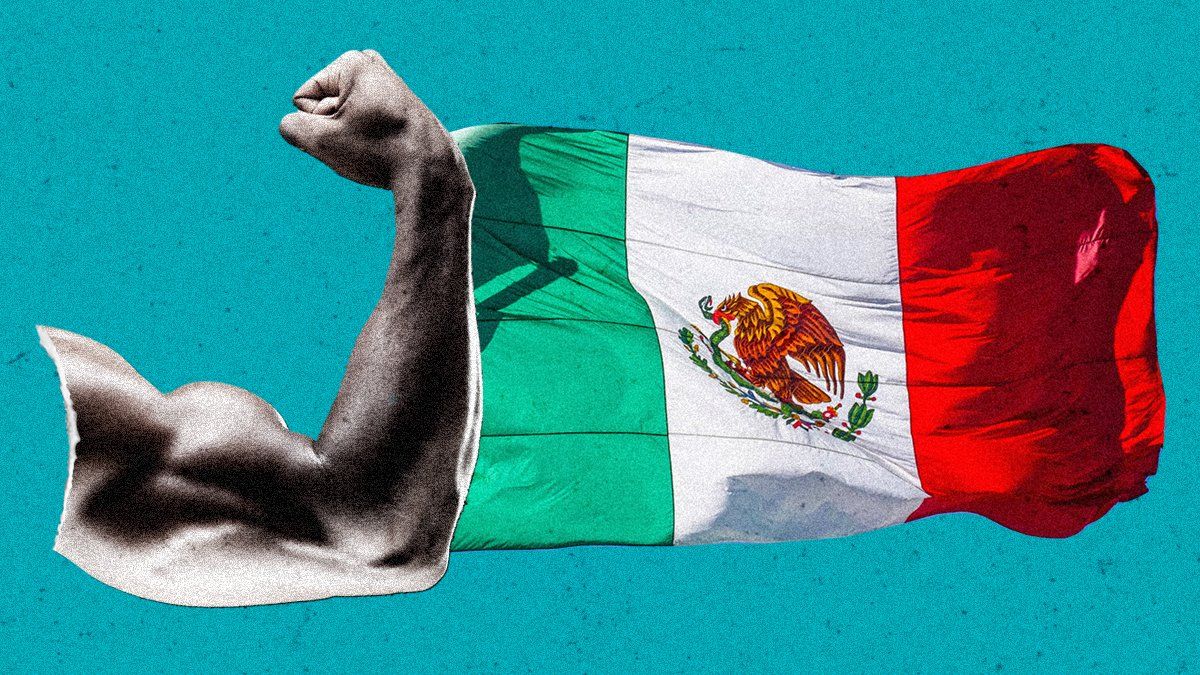With so many other international stories dominating the news these days – Russia’s war in Ukraine, US-China tensions, Iran’s nuclear program, etc. – it’s easy to lose track of more positive stories. And when it comes to Mexico, the headlines suggest the country is struggling.
And I could write that story too. In most media, today’s Mexico conjures images of violent drug cartels and other organized crime groups, trouble at the US border, or large-scale protests led by an opposition that accuses the country’s president of a power grab that threatens democracy.
Mexico has its share of problems. But today, I want to give you three reasons for optimism that, politically and economically, Mexico is strong and getting stronger.
The China substitute
First, Mexico’s economic success remains closely tied to economic growth in the United States. (In 2022, Mexico’s total trade with the state of Texas was five times higher than its total trade with all of Latin America.) Over the years, that’s been a mixed blessing. When the US economy weakens, Mexico’s export revenue takes a hit. There are fewer remittances flowing south from Mexicans working in the United States. There are few American tourists pumping dollars into Mexican cities, towns, and businesses.
But over the decades, the US economy has remained strong and is currently running hot. Even with high inflation and rising interest rates, the US job market is strong, consumers are spending, and pandemic-weary tourists are traveling.
Mexico’s exports are surging. The country’s consumer confidence is close to its highest point in a generation. Add the reality is that the war in Ukraine has put strong upward pressure on global energy prices, boosting Mexico’s oil revenue. As the war grinds on, that advantage is likely to continue.
But the factor that matters most for coming years is souring US sentiment on relations with China. The Biden administration, both Democratic and Republican members of Congress, and many US governors are pushing for a significant national security and strategic decoupling from China and Chinese companies. US businesses are increasingly less confident they can navigate complicated US-China politics, abrupt changes inside China like the 180-degree turn on COVID policy, and other factors to continue to do profitable business in China.
Who benefits? Mexico. Particularly as “nearshoring” becomes a much more familiar word for many Americans. Nearshoring is the practice of shifting investment in manufacturing, production, and business operations closer to home to avoid the problems that come with both political risk and dangerously long supply chains.
Mexico already has the world’s 15th largest economy. While China, much of Europe, and Japan are aging, Mexico also has excellent demographics. Its population tops 130 million; its median age is 29.
A cost-conscious populist
Then there’s the country’s president. Andrés Manuel López Obrador has his fans and his detractors. But overall, he’s remarkably popular. After four years in office, his approval rating stands at 63%. How has he accomplished that? Mexico’s chief executive has crisscrossed the country by car and commercial airlines, visiting people and places, particularly in southern states, where national politicians are rarely seen.
But, talented populist though he is, he hasn’t bought support by launching a state spending spree. Even after the pandemic, Mexico’s debt-to-GDP ratio still stands at a healthy 50%, because the leftist López Obrador, aka AMLO, has confounded critics by both expanding the country’s tax base and keeping government spending in check.
Nor does Mexico’s president face the problem of balancing relations with multiple other countries. AMLO understands that his country’s giant neighbor is its primary source of both opportunities and challenges, and he’s invested in pragmatic relations with both Donald Trump and Joe Biden. His economic ambitions center on strengthening and expanding the USMCA trade agreement (NAFTA 2.0) rather than on hedging bets on Europe and Asia.
Strong institutions
The one area where AMLO is picking a fight that won’t help Mexico is on the question of judicial oversight of government. At the moment, he’s going after Mexico’s National Electoral Institute, which administers elections, by trying to cut 80% of its funding. This plan has filled Mexico City streets with hundreds of thousands of angry protesters, who warn that if he succeeds, AMLO would undermine Mexico’s ability to hold free and fair elections.
But the president isn’t going to succeed. The country’s Supreme Court is going to rule against him, and though AMLO can (and probably will) call on his own protesters to block traffic, Mexico’s governing institutions are plenty strong enough to keep the country moving forward.
In fact, that’s the lesson from Mexico’s presidential election of 2006, which AMLO lost by the smallest of margins and then rallied his supporters to occupy the center of Mexico’s capital for many weeks. But as I wrote in September 2006, the country’s political institutions absorbed that shock with no great difficulty. Politics continued. The currency remained stable. The economy moved forward.
AMLO has continued to wage war on a political elite he believes is plagued with corruption and cost him victory 17 years ago. But now, as then, Mexico is politically mature enough to handle challenges even larger than we now see in the president’s standoff with courts.
Finally, AMLO has given no indication he wants to remove presidential term limits from the country’s constitution, and unlike former US President Donald Trump and Brazil’s former President Jair Bolsonaro, he and his party are genuinely popular and have no need to contest the next election outcome with violence. And all of AMLO’s likely successors agree with the merits of nearshoring and deeper integration with the US, reinforcing the country’s long-term economic stability.
Make no mistake: Mexico will continue to face major challenges in the years ahead. Mexico must continue to develop its infrastructure, energy, and water supplies to fully benefit from nearshoring opportunities. Crime, corruption, and the need to manage shifting US border politics will remain formidable obstacles to progress. But advantages both external and internal provide a solid foundation for progress.